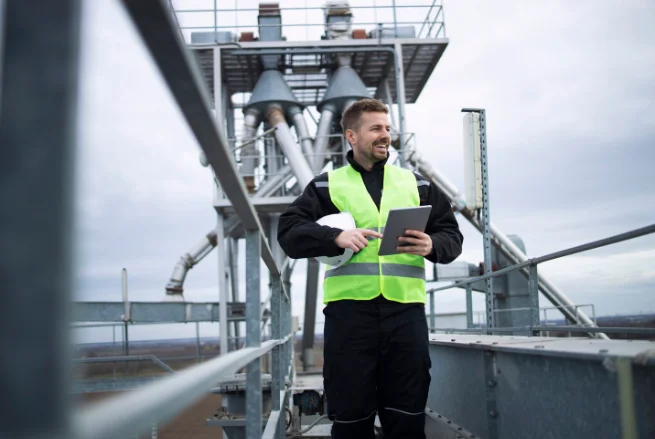Industrial operations across manufacturing, healthcare, food processing, and technology sectors depend on consistent, high-quality gas supply to maintain productivity and safety standards. As businesses face increasing pressure to optimize costs while ensuring uninterrupted operations, traditional gas delivery methods are giving way to more sophisticated on-site generation systems.
The shift toward advanced gas supply management represents more than just a technological upgrade—it’s a strategic move that can dramatically impact operational efficiency, cost control, and environmental sustainability. Companies that embrace these modern solutions often discover benefits that extend far beyond their initial expectations.
Understanding Modern Gas Generation Technology
On-site gas generation has revolutionized how industries approach their gas supply needs. Rather than relying on delivered cylinders or bulk tanks, businesses can now produce gases like nitrogen, oxygen, and hydrogen directly at their facilities using state-of-the-art equipment.
These systems utilize various technologies, including pressure swing adsorption (PSA), membrane separation, and electrolysis, depending on the specific gas requirements. Each method offers distinct advantages for different applications, from laboratory environments requiring ultra-pure gases to manufacturing processes needing large volumes of industrial-grade gases.
The reliability factor cannot be overstated. When operations depend on continuous gas supply, even brief interruptions can result in significant losses. Advanced generation systems incorporate multiple safety mechanisms, backup components, and monitoring systems to ensure consistent output even during maintenance periods or unexpected equipment issues.
Cost-Effectiveness and Financial Benefits
Financial considerations drive many decisions to implement advanced gas supply systems. While the initial investment may seem substantial, the long-term savings often justify the expense within months or years, depending on usage patterns.
Traditional gas delivery involves ongoing costs that accumulate quickly: cylinder rental fees, delivery charges, handling expenses, and the labor required to manage inventory. These recurring costs can easily exceed $50,000 annually for moderate-volume users, making on-site generation an attractive alternative.
Advanced systems also provide predictable operating costs. Once installed, the primary expenses involve electricity consumption and routine maintenance. This predictability enables better budgeting and financial planning, particularly valuable for businesses with tight cash flow management requirements.
Environmental Impact and Sustainability
Environmental consciousness has become a crucial factor in business decision-making. Advanced gas supply systems contribute significantly to sustainability goals through multiple pathways.
Transportation reduction represents the most obvious environmental benefit. Eliminating regular gas deliveries reduces carbon emissions from trucks, while also decreasing the environmental impact associated with cylinder manufacturing and reconditioning processes.
Energy efficiency has improved dramatically in modern gas generation equipment. Newer systems consume substantially less electricity per unit of gas produced compared to older technologies, directly reducing the carbon footprint of gas production.
Waste reduction is another significant advantage. Traditional gas supply often results in residual gas in returned cylinders, representing both financial loss and environmental waste. On-site generation eliminates this inefficiency by producing only the required amount of gas.
Quality Control and Purity Considerations
Gas purity requirements vary dramatically across industries and applications. Pharmaceutical manufacturing might require 99.999% pure nitrogen, while food packaging applications may function adequately with 95% purity levels.
Advanced generation systems excel at providing consistent quality tailored to specific needs. Built-in purification stages, continuous monitoring systems, and automated controls ensure that output meets specifications consistently. This reliability eliminates the quality variations sometimes encountered with delivered gases from different suppliers or production batches.
Real-time monitoring capabilities allow operators to track gas quality continuously, identifying potential issues before they impact production. Many systems include data logging features that maintain quality records for compliance purposes and process optimization.
Integration with Existing Infrastructure
Successful implementation of advanced gas supply systems requires careful consideration of existing facility infrastructure. Modern systems are designed with flexibility in mind, accommodating various building configurations and utility arrangements.
Electrical requirements vary depending on system capacity and technology type. Most installations require 480V three-phase power, though smaller systems may operate on standard 220V connections. Proper electrical infrastructure assessment ensures reliable operation and prevents costly modifications after installation.
Space considerations have become less restrictive as equipment manufacturers develop more compact designs. Many current nitrogen generator systems in New Jersey installations occupy less than 100 square feet while producing thousands of cubic feet of gas daily.
Integration with existing gas distribution networks typically involves straightforward connections to current piping systems. Professional installation teams can usually complete integration without significant disruption to ongoing operations.
Maintenance and Operational Excellence
Preventive maintenance programs are essential for maximizing system reliability and longevity. Modern gas generation equipment incorporates sophisticated diagnostic systems that provide early warning of potential issues, enabling proactive maintenance scheduling.
Routine maintenance tasks typically include filter replacements, valve inspections, and performance calibrations. Most systems are designed for ease of maintenance, with accessible components and clear maintenance schedules provided by manufacturers.
Training programs ensure that facility personnel can operate systems safely and efficiently. Many equipment suppliers provide comprehensive training covering normal operations, troubleshooting procedures, and basic maintenance tasks.
Making the Strategic Decision
Evaluating whether advanced gas supply management makes sense for your operation involves analyzing current costs, future needs, and strategic objectives. Gas usage patterns, quality requirements, and growth projections all factor into this decision.
Conducting a thorough cost-benefit analysis should include not only direct financial comparisons but also consideration of intangible benefits like improved reliability, enhanced safety, and environmental impact. Many organizations discover that these additional factors tip the balance strongly in favor of on-site generation.
Transforming Your Gas Supply Strategy
Advanced gas supply management systems represent a mature technology that has proven its value across diverse industries. The combination of cost savings, reliability improvements, and environmental benefits creates compelling reasons to consider this strategic upgrade.
Companies that have made this transition consistently report improved operational efficiency, reduced costs, and enhanced competitive positioning. As gas generation technology continues advancing and energy costs fluctuate, the financial case for on-site generation becomes increasingly attractive.
Taking the next step involves consulting with experienced system integrators who can assess your specific requirements and recommend appropriate solutions. This professional guidance ensures that your investment delivers maximum value while meeting current needs and accommodating future growth.


